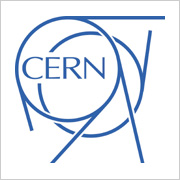SCIENTIFIC DOMAINS
Plasma Physics
Key words: high power electronics (gyrotrons and their applications, relativistic electronics, microwave processing of materials), plasma electrodynamics (powerful radiation interaction with plasma, plasma astrophysics, geophysical electrodynamics), radiophysical methods of diagnostics (plasma diagnostics, millimeter and submillimeter radioastronomy, remote diagnostics of natural media, coherent seismoacoustics, vibroacoustics and spectroscopy, nonlinear acoustics, optical tomography), low-frequency ocean acoustics (long-range sound propagation in the ocean, acoustic tomography of the ocean, low-frequency radiating complexes, hardware for underwater acoustics), dynamics of nonlinear processes (nonlinear waves, dynamic chaos and structures, internal and surface waves), laser physics and nonlinear optics
CURRENT CHALLENGES
The research program of XCELS is essentially multifunctional. A considerable amount of research will be carried out at the junction with other areas of knowledge – high energy physics, nuclear physics, astrophysics, and biomedicine. Once completed, XCELS will be a world-class S&T facility with the subexawatt laser significantly exceeding the level of radiation power inherent in the most powerful available, constructed or projected laser systems worldwide. The resulting radiation at the output of the laser complex will have a power of 200 PW. The complex will comprise 12 identical channels based on the technique of optical parametric chirped pulse amplification (OPCPA) to a Petawatt power developed at the Institute of Applied Physics RAS. Along with the subexawatt laser, the XCELS complex will house unique laboratories for experiments on physics of strong fields, high-energy physics, laboratory astrophysics and cosmology, nuclear optics, neutron physics, laboratories for studying the properties of vacuum, attosecond and zeptosecond physics, and fundamental metrology. XCELS will also comprise a powerful center for data processing and computer modeling of interactions of extreme light fields.
PROSPECTIVES
The subexawatt laser significantly exceeding the level of radiation power inherent in the most powerful available, constructed or projected laser systems worldwide, will be based on the technique of optical parametric chirped pulse amplification (OPCPA) to the petawatt power developed at the Institute of Applied Physics RAS. The complex will comprise 12 identical channels, each of which will generate a pulse with the energy of 300-400 J, duration of 20-30 fs, maximum intensity at focusing more than 1023 W/cm2. The channels operate by the scheme of parametric amplification in KD*P crystals with the aperture of final cascades of 30×30 cm2.
It is supposed that optical pulses in laser modules of the subexawatt complex will be phased to an accuracy of hundredths fractions of a light wave period (10-16s). The first phase of the Project will be creation at IAP RAS of two such modules with the power of 15 PW each based on parametric amplification in KD*P crystals. This will not only allow creating a reliable prototype of an XCELS module, but will also enable solving fundamental problems associated with phasing of channels, as well as completing diagnostic equipment for applications. In addition, final corrections will be made in the architecture and component base of the XCELS facility. Further, 12 channels of the main XCELS laser complex will be assembled by the proven technology in a newly constructed building of the international center.
PARTNERS








